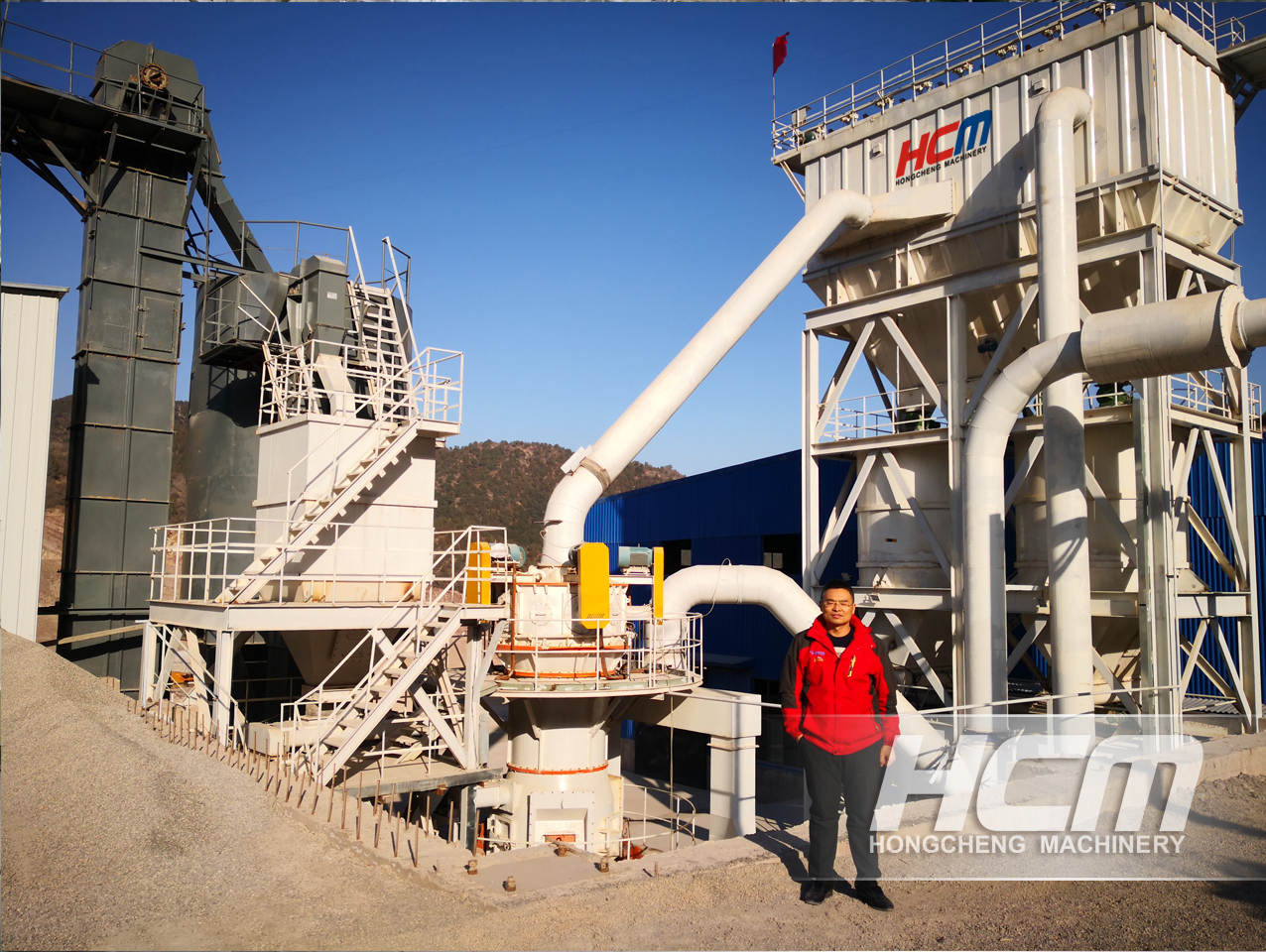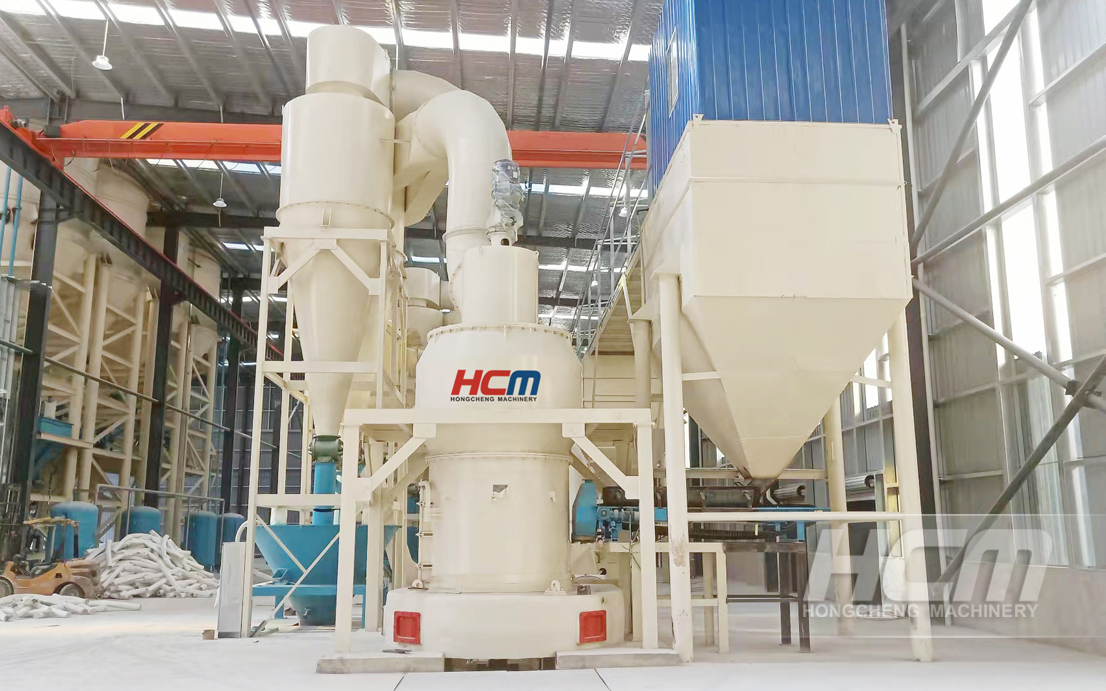Welcome to Guilin HCM Machinery Official WebSite!
Release date: 2022-11-09 10:55:04
Calcium carbonate is an inorganic compound, which is the main component of limestone and calcite. Calcium carbonate is divided into two categories: heavy calcium carbonate and light calcium carbonate. Heavy calcium carbonate and light calcium carbonate have different reaction characteristics due to their different particle size, crystal shape and interface properties. Therefore, there are many varieties of calcium carbonate with different uses, such as active calcium carbonate, calcium carbonate for paper making, calcium carbonate for plastics, nano calcium carbonate, edible calcium carbonate, medical calcium carbonate, chemical calcium carbonate, and coating calcium carbonate. HCMilling(Guilin Hongcheng) is a calcium carbonate grinding mill manufacturer for calcium carbonate powder processing. Our calcium carbonate ring roller mill, calcium carbonate vertical roller mill, calcium carbonate Raymond mill and other calcium carbonate grinding mill have been widely used in the calcium carbonate powder processing market outside China. The following is an introduction to the calcium carbonate powder processing technology.

HLMX series calcium carbonate ultra-fine vertical roller mill
Application and market prospect of calcium carbonate fine powder:
At present, calcium carbonate powder has been widely used in papermaking, plastics, plastic film, chemical fiber, rubber, adhesive, sealant, daily chemical industry, cosmetics, building materials, coatings, paint, ink, putty, sealing wax, putty, felt packaging, medicine, food (such as chewing gum, chocolate), and feed.
Use of calcium carbonate fine powder:
1. Increase product volume, reduce costs, and improve processing properties (such as viscosity, rheological properties, and vulcanization properties)
2. Improve dimensional stability, reinforcement or semi reinforcement, improve printing performance, and improve physical properties (such as heat resistance, matting, abrasion resistance, flame retardancy, whiteness, glossiness).
The superfine ground calcium carbonate powder is widely used and has a good market prospect. At present, the production equipment and process flow of superfine calcium carbonate powder are very mature. There are many excellent manufacturers of crushing and grinding equipment for superfine heavy calcium carbonate powder in China, and each manufacturer has a complete solution to provide complete superfine heavy calcium carbonate powder.

HC series calcium carbonate Raymond mill
Different treatment processes for heavy/light calcium carbonate:
1. Treatment process of heavy calcium carbonate
Calcite, limestone, chalk, shells, etc. transported from the quarry to remove gangue; Then use a crusher to roughly crush the stones, and then use a calcium carbonate grinding mill to crush them to obtain fine limestone powder. Finally, use a classifier to grade the grinding powder. The powder that meets the particle size requirements will be stored as a product package. Otherwise, it will be returned to the calcium carbonate grinding mill for grinding again.
2. Process of light calcium carbonate fine powder:
1) Carbonization method: calcine limestone and other raw materials to generate lime (mainly calcium oxide) and carbon dioxide, then add water to digest lime to generate lime milk (mainly calcium hydroxide), then add carbon dioxide to carbonize lime milk to generate calcium carbonate precipitation, and finally dehydrate, dry and crush calcium carbonate precipitation to obtain light calcium carbonate.
2) Sodium carbonate (Na2CO3) calcium chloride method: calcium chloride is added to the sodium carbonate aqueous solution to generate calcium carbonate precipitation.
3) Caustic alkali method: During the production of caustic soda (NaOH), light calcium carbonate can be obtained as a by-product. The hydrated lime is added into the soda water solution to generate calcium carbonate precipitation, and the caustic soda water solution is obtained at the same time. Finally, the calcium carbonate precipitation is dehydrated, dried and crushed to obtain light calcium carbonate.
4) Solvay method: During the production of soda ash, light calcium carbonate can be obtained as a by-product. Saturated salt water is carbonized with carbon dioxide after inhaling ammonia to obtain heavy alkali (sodium bicarbonate) precipitation and ammonium chloride solution. The production process of light calcium carbonate is mainly divided into the following steps: 1. Limestone calcination 2. Quicklime digestion 3. Carbonization of lime water 4. Sedimentation and filtration 5. Drying and crushing.
Equipment for calcium carbonate processing and milling
Crusher, grinder, packer, elevator, conveyor, etc. Among them, calcium carbonate grinding mill is the main equipment for calcium carbonate processing and milling. At present, there are many types of mill widely used in the market, such as calcium carbonate Raymond mill, calcium carbonate vertical roller mill, calcium carbonate ultra-fine vertical roller mill, calcium carbonate ring roller mill, etc. Calcium carbonate Raymond mill and calcium carbonate vertical roller mill are suitable for coarse powder processing within 325 meshes; Calcium carbonate ring roller mill is suitable for the processing of 325-1250 mesh superfine powder; Calcium carbonate superfine vertical roller mill is suitable for processing 600-2500 mesh superfine powder. HC series calcium carbonate Raymond mill, HLMX series calcium carbonate ultra-fine vertical roller mill and HCH series calcium carbonate ring roller mill produced by HCMilling(Guilin Hongcheng) are all popular calcium carbonate processing and milling equipment in the market. If you have relevant purchase requirements, please contact HCM to know the details about equipment selection.